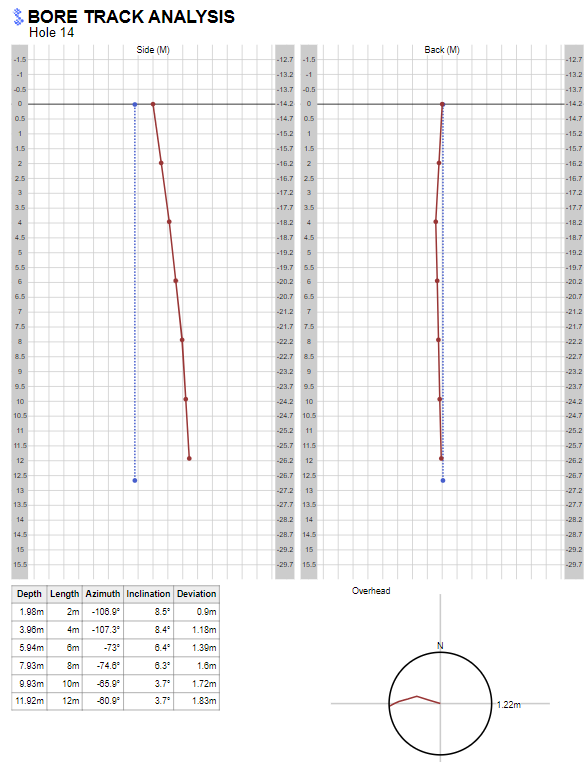Smarter Drilling: 3 Tools Empowering Drilling & Blasting
Rich and accurate drilling data can be used to dramatically improve blasting outcomes, but traditionally it has been difficult to analyse and apply it in practice.
Perhaps this is because drill data has been seen as a 'black box' of sparse, subjective, and paper-based notes. And perhaps it is also because there were no tools designed to analyse this and enable better blasting decisions.
The result is that it's been almost impossible to manage drilling performance and to properly tailor blast loading to bench and hole conditions.
Now, new technologies are changing all of that. Drilling is no longer done "in the dark." Detailed information about the as-drilled holes is available for anyone looking to improve drilling or blasting performance.
When quality drilling data is combined with blast design the improvements to fragmentation, safety, vibration, back break and more are incredible- Ravi Sahu, CEO Strayos
Combining drill data with drone and "digital twin" (or 3D modelling) data allows insights never before possible. It enables, drillers, blasters, and mine operators to improve operations and extraction at the very beginning of the mining process leading to overall improvements that were unimaginable even a few years ago.
4 Technologies that measure drilling data:
- Collar Deviation AI
- Boretrak Data
- Measure While Drilling aka Smart Drill Data
Drones and AI- the Digital Twin and Predictive Modelling
Using drones, incredibly detailed survey grade gps tagged images are gathered of your site and your bench. From these images a 3D model or Digital Twin is constructed of your bench allowing you to see your bench in exquisite detail and augmented with tons of information available at your fingertips.
Now you can design your drill plan on the digital twin, taking advantage of all of that information gathered by the drone and labeled by the AI. Information like 2D and 3D burdens, highwall analysis, bench and toe elevations, subdrill, inclination, bench face rock mass information, and more. The blast designs are sent to the drillers clear and consistent without any need for blaster boots on the ground, no measuring tapes, no putting people in risky situations near a highwall.

Then its up to the driller to execute. Depending on the equipment and the geology the driller is working with (as well as the skill of the driller), that execution can vary significantly from the drill plan- as perfect as it may be.
Lives can depend on the difference of the reality and the plan. Bottom lines can hang in the balance. The data about the as drilled holes is a critical piece to designing a quality blast.
Depending on which tools you have available to you, there are several ways you can integrate drilling data into your blast plan.
1. Collar Deviation AI
Using drone images and AI to automatically detect the as-drilled locations of the hole collars, this tool compares them to their planned locations.
Knowing the actual positions of the collars allows for some performance evaluation so drillers can refine their techniques, but also allows for modifications to the blast design. Using the digital twin and the true collar location, and assuming other variables like inclination remained the same, the AI can estimate the new burdens of the as-drilled holes, allowing blasters to adjust their shots.


2. Boretrak Data Integration
Boretraks and other down hole deviation measurement tools have revolutionized the drilling industry. Now simply insert the boretrak into the as drilled hole and you can record the path of the as drilled hole from collar to toe. This is incredibly valuable to drillers, blasters, and site operators. Drillers can refine their techniques based on the feedback. Drillers can know exactly where the holes go, which direction, and how far. Deviations that can significantly impact the burdens and hole to hole interactions can be accounted for yielding increased safety, better fragmentation, and reduced ancillary blast outcomes.
However, one of the principal weaknesses of the boretrak data is that it lacks any gps or coordinate recording data. So while the path is measured, it's measured in relation to the starting point of the hole. That means that hole could be anywhere.
Adding boretrak data onto a digital twin and assuming the collar positions match the planned collar positions is good and can yield significant improvements in outcomes. Adding boretrak data and Collar Deviation Detection (or a gps station) grounds the boretrak data and presents both drillers and blasters with a truly accurate picture of what the drill holes are doing under their feet.


3. Measure While Drilling Data, a.k.a. Smart Drills
Finally, the creme de la creme. Smart drills, or retrofitted drills made smarter with add-on tech. These drills, like those made by Sandvik or Epiroc, are gps enabled, connected to the network, and make extensive recordings of the data they encounter while drilling- including collar and toe positions, penetration rates, etc. They can receive the drill plan directly from the blast design software and can upload their files directly into the digital twin to easily see the true locations of the holes and their paths and adjust the blast design as needed.
Even better, because they record a wealth of information they encounter when drilling, the driller and blaster now have at their fingertips access to geological insights inside the bench. They know what they're getting into and can adjust their drilling and blast design accordingly.
Blasters can see if there are crevices and at exactly what depths, they can identify clearly exactly where in each hole the drill encounters soft rock or hard rock. Very useful when you have difficult geologies- especially ones that aren't always clear from the face.
These insights help blasters design their timing and loading to reflect the true position of the holes, discontinuities in the bench and plan differential loading based on the geology encountered.


Knowing the geology of the bench and the true locations of the as drilled holes allow drillers to optimize their drilling performance and allow blasters to achieve better fragmentation, better ore body control, control for flyrock, vibration and back break and get their best blast ever.
Just when you thought it was over...
Bonus Tech: [Rock Mass AI]
This is saved for bonus tech because its not really recording drilling data. However, it can be used to inform drillers and blasters about the geology in the bench and help them prepare for what they may encounter. Rock Mass AI uses AI to identify rock mass characteristics from the face of the bench using drone images. The data identified and modeled on your bench's digital twin is gathered during the initial mapping flight so its available from the very beginning for drill plan design. It identifies and labels bedding planes, discontinuities, dip direction and angle, as well as slope direction- all from the face of the bench. While it doesn't let you see inside the bench like Measure While Drilling Data does, it can still give good data to assist in planning drilling and blasting operations.


New technologies are rapidly changing the drilling, blasting, mining, and aggregates industries, empowering them in ways never before possible. Make sure you are taking advantage of the best tools available.
Check out our 2 Free E-books on AI applications for the drilling, blasting, and mining industries to see all the amazing advances that are available.
TLDR? Watch our videos instead: YouTube
